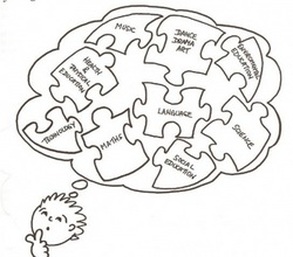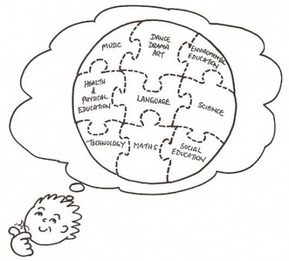What is Integrated Curriculum?
Curriculum Integration has recently emerged to the forefront of many professional educations and the term has been loosely used in many curriculum designs. Traditional approaches to curriculum has often provided children with a fragmented understanding that has limited their ability to make connections for deep and sustained learning.
So, what is Integrated Curriculum?
Integrated Curriculum is essentially an authentic integration of traditional subjects areas into a learning unit that develops rich understanding across curricula. It involves the integration of content with skills and processes.
An integrated curriculum design is open-ended, encourages problem solving and directly connects students with 'the real world' (Kruse, 2001). This method of curriculum designing aims to provide children with learning that is authentically connected across all learning experiences. Linking subject areas only occur if they are real so that children can see the connections of their learning.
The main principle behind Curriculum Integration involves both the integration of 'content' (what is being learned about and for) and 'process' (how and with whom this learning is taking place) (Murdoch, 2007).
Curriculum Integration consists of integrating fours major aspects:
- Integration of Experiences - Our experiences, perceptions, beliefs and values about other people and the world we line in.
- Social Integration - The people that make up our school and its community.
- Integration of Knowledge - The knowledge that all students regardless of subject area.
- Integration as a Curriculum Design - This particular kind of curriculum design.
How does Integrated Curriculum work?
It is an approach to planning that begins with establishing a central theme which branches out with the discovery of big ideas related to the theme and activities that might be used to explore them (Beane, 1997, p.10). This planning is done without the consideration of specific subject-area since the purpose is to explore the central theme. The theme in this case is the overriding matter where learning flows from. Students move from one activity to another, each one involving prior knowledge from multiple sources.
It is an approach to planning that begins with establishing a central theme which branches out with the discovery of big ideas related to the theme and activities that might be used to explore them (Beane, 1997, p.10). This planning is done without the consideration of specific subject-area since the purpose is to explore the central theme. The theme in this case is the overriding matter where learning flows from. Students move from one activity to another, each one involving prior knowledge from multiple sources.
The Integrated Curriculum model is implemented through an inquiry based learning. By using an inquiry approach, it allows students to take control of their learning, to build on their previous knowledge, to gather and synthesise information, reflect on their learning and applying it into a meaningful context. It encourages our students to take risks, explore patterns, and understand the different points of view to particular issues (Pigdon & Woolley, 1992). The inquiry unit consists of 5 different stages:
All work is done by Alan Nguy 299 967
- Tuning In: allowing students to identify aspects that is known and aspects that they think they know. This stage utilises and challenges the prior knowledge and experiences of students.
- Finding Out: further stimulating the curiosity and understanding of individuals by researching and discovering information. This particular stage introduces new information that may answer any previous misunderstandings or questions.
- Sorting Out: Providing concrete means of processing and representing information and ideas gathered from the Finding Out stage
- Going Further: Extending and challenging their understanding.
- Taking Action: Linking the understanding and beliefs gathered in the previous stages with the real world.
All work is done by Alan Nguy 299 967


